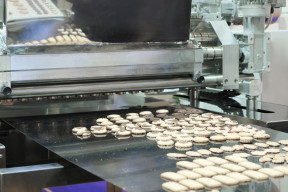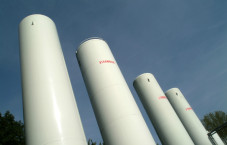CO₂ injection in food processes

During some of the production processes in the food industry heat is released which is not desirable for the quality of the food. To be able to keep the temperature low enough, liquid CO2 is used as refrigerant.
Application scope
With the kneading of dough in industrial bakeries, heat is released during the kneading. When the temperature in the dough rises too high there is a risk that the yeast starts to work too early during the kneading, instead of in the rising room. An injection of liquid carbon dioxide (CO2) above the kneader will ensure that a fine snow of CO2 ends up in the dough and as such can cool the dough down to the desired temperature.
With the cutting of meat to mince in a meat cutter, unwanted heat is also created by the mechanical movement of the knives. This heat will result in the meat partially cooking at some points, which is of course not the intention. In addition, an elevated temperature can lead to bacterial growth, which has a negative impact on the preservation time. To avoid this, one can use liquid CO2 as refrigeration medium. In this application one can also inject nitrogen (N2).
Requirements
The applications where liquid CO2 is used for cooling purposes in the food industry are always based on the physical characteristics of it, whereby during the decompressing of liquid CO2 a solid and a gaseous aggregation condition are created. The solid part, also known as CO2-snow, has a temperature of -79°C and provides the cooling. The gaseous part will typically have a temperature between -50°C and -60°C and is driven via an extraction pipe out of the room.
A typical setup will consist of the following parts:
- cryogenic storage tank with a capacity that is tuned to the predicted consumption, optionally fitted with a telemetry device to keep track of the content and pressure of the tank, as well as to initiate the deliveries automatically;
- vacuum insulated pipe to ensure that the liquid CO2 reaches the consumer with as little loss of temperature as possible;
- injection device with which the CO2 can be dosed, whether or not integrated in the automation systems which are available;
- the gas extraction system to the outside air;
- CO2-detection to check the space for too high concentrations.
Delivery options
For this application, IJsfabriek Strombeek can provide during a pilot project mini bulk containers so that we can assist you to make the right choice and as such also assess the impact on the process. Once this stage is implemented one can always work with a storage tank and bulk deliveries.

